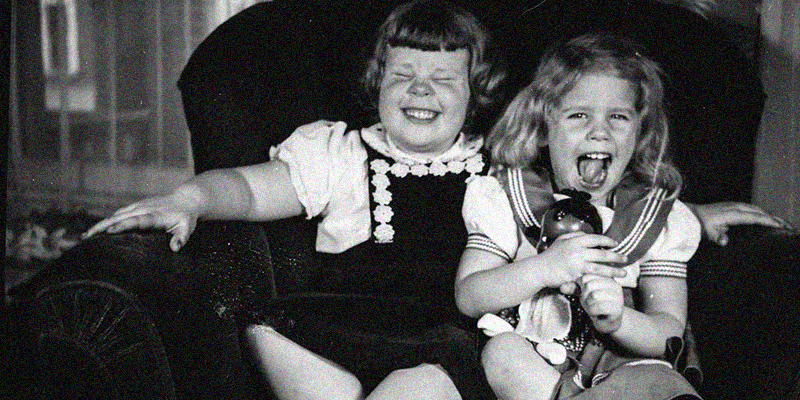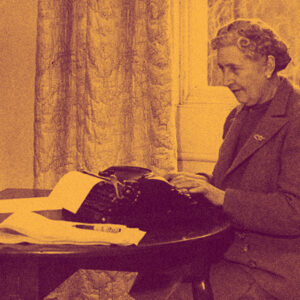‘Laughter is poison to fear,’ said George R. R. Martin in A Game of Thrones. ‘To laugh is to dispel the darkness,’ agreed Isobelle Carmody in The Gathering. Both insightful quotes that speak to a universal truth. Fear is allayed the instant we laugh at the source of it, and what better way to cope with the inevitable horrors of life?
Unfortunately, if you’re a writer of mystery thrillers and you like to blend a dark, creeping sense of terror with humor, the fact a single laugh can cancel out the tense anticipation you’ve built up over thousands of words, is one huge bummer.
This dilemma stalked me while I wrote my latest novel The Mysterious Case of The Alperton Angels. I set out to write a story that explored the murky confluence of true crime, crime fiction and entertainment and thought at first it would take the form of a satire.
The action follows two true crime authors, Amanda Bailey and Oliver Menzies, both locked in competition to find a key interviewee—someone who was a baby 18 years ago when they narrowly escaped being sacrificed by a cult that believed they were the anti-Christ. This child, now an adult, can tell their story for the first time.
The two writers, old rivals but obliged to work together, speak to witnesses, examine evidence and trawl through fictional works inspired by the events, but they disturb a deadly sleeping dog. So many inconsistencies emerge, our heroes conclude that what everyone thinks happened the night the Alperton Angels died, is only part of the truth.
The trouble with satire
Satire is comedy with a purpose and that purpose is to expose hypocrisy, absurdity and deceit, in this instance the uncomfortable realities of the true crime industry. So, I looked forward to making sharp observations and drawing on the surreal and the eccentric to explore the fact that ‘truth’ can be inconvenient when you’re making entertainment out of real-life crime.
Only, I didn’t bank on what happened next.
My characters took me in a whole new direction. Their journeys became darker and more thoughtful than I had ever imagined. Any tongue-in-cheek comments and comedic episodes ruined this serious new tone. Gradually, humorous lines and scenes were replaced with straight ones as the story was clearly turning out be to be my toughest and most contemplative yet.
I am a ‘cosy crime’ author, even if I believe the moniker doesn’t take into account the dark side of what I write. But, honestly, it’s anathema to me that I would write anything without any humor in it at all. As The Alperton Angels story unfolded, a character emerged who I felt could provide light relief without dispelling the tension in that delicate balance so accurately described by Martin and Carmody at the start of this feature.
Amanda records all her interviews and has them transcribed by her former assistant Ellie Cooper. At first this was something of a literary device for us to access Amanda’s research, but increasingly the character of Ellie began to play a much more subtle, nuanced role in the storytelling.
She became the character we are with as the reader. She looks in on the action and reaches her own conclusions, with trademark subtle and not-so-subtle observations about the witnesses—as well as Amanda’s dubious working practices. Ellie grew into her role, not only as the moral compass of the story, but also as its source of humour as we followed dark events to their even darker conclusion. As an outsider to the action, she could make funny and insightful comments yet leave the tension intact.
Playing for laughs
What makes a reader, or anyone, laugh is ungraspable. It really is a kind of magic that shifts and changes from year to year, if not day to day. There are different types of jokes that come in and out of vogue, and tones that gain or lose their humour over time, but down through the decades, crime writers have used them all.
The Golden Age was shot through with humor (every pun intended) from the very start, with Agatha Christie the queen of mannered comedy and sharp, satirical character observation. No one peeked beneath the veneer of polite society with quite the dry humour she did. This tone of observation is often described as a ‘comedy of manners’—it’s the laugh we find looking in on a world and observing its quirks, finding them amusing because the stakes are considered sky-high by the characters, yet low to nil in the grand scheme of things.
Poirot, as an outsider in both situation and culture is often in the perfect position to make these observations—“in England the cult of the moustache is lamentably neglected,”—often with his trademark outspoken directness: “If you will forgive me for being personal, I do not like your face.”
Agatha Christie’s comedy also drew on the humour of recognition. There’s something funny about seeing or hearing characters, situations and feelings common to us all, but rarely mentioned in everyday life. From the village politics of Murder at the Vicarage to the hypocrisies of the English upper class laid bare in Murder on the Orient Express, Christie knew her readers would relish the chance to laugh at what they could not change.
This brand of humour remains fundamental to modern stand-up comedy and is a testimony to the fact laughter is a means through which we bond over shared experiences.
Modern crime novels inspired by the golden age, still deliver humour via character. The Thursday Murder Club finds a gentle humour in a circle of elderly ‘detectives’ based in a retirement village. Vaseem Khan’s Malabar House series casts a witty eye over the social mores of the British Raj and the wider Indian society forced to live under them. Even my own debut novel The Appeal found comedy in the minutiae of social interactions and the subtle ways in which we change our face depending on who is, or isn’t, looking. My follow-up, The Christmas Appeal, is fun and festive, but the dark humor of social hierarchy is never far from the surface.
If you didn’t laugh…
Crime fiction writers have also overcome the fear-humor equation by exploiting ‘gallows humor’. These dark jokes, often at the expense of otherwise tragic and deeply unfunny situations, are typical of professions where death and trauma are daily events, and none more so than the spectrum of law enforcement.
It’s no surprise that the gumshoe detectives of crime fiction from Sherlock Holmes and Philip Marlowe to the latest Mark Billingham series The Last Dance, are where these witty one-liners and irreverent put downs create a foil to the most humourless subject matter. What’s more, thanks to its inherent darkness, it can be employed in a crime novel without dissolving the tension. Win win!
Of course, gallows humor can border on inappropriate when observed out of context, or by outsiders, but when we are immersed in a novel whose subject matter is harrowing, it works as light relief for the reader, as it does in real life for those whose profession brings them in close proximity with the lower reaches of humanity.
… you’d wry
Humour is not confined to gags, punchlines and slapstick farce. It can be found in a sense of irreverent cynicism and a wry turn of phrase delivered by a wise-cracking—or world-weary—character. Such humor plays to our inner cynic who wants to scoff at all that’s deemed important in life.
For the highest-profile example of character-based narrative humor in recent years think Fleabag… a TV series so funny it was billed as a sitcom, and yet whose themes were as dark and visceral as any drama. It can be done!
Likewise, in some crime novels a lively, sassy narrative can take the place of overt humor, to give the book an energetic, contemporary tone without dispelling tension or drama. Recent stand-out examples include Run Time by Catherine Ryan Howard, Grave Expectations by Alice Bell and Over My Dead Body by Maz Evans. Interestingly, the latter two feature ‘ghosts’ of murder victims, a format that plays into our suspension of disbelief. Thus the visceral horror of violent crime is denied and, ultimately, rendered impotent.
I explored denial as a source of humor in The Twyford Code, as the main character Steve Smith narrates his personal journey with a light, bright and jaunty Cockney humor and irreverent outlook that proves even more effective when we realise he is actually reminiscing about the most harrowing trauma from a dysfunctional childhood.
From twists to twisted
Speaking of The Twyford Code, there’s a particular humour to be had from the unexpected. Even the darkest story can lift your spirits if it catches you out with a fabulous and satisfying twist. But twists don’t necessarily come at the end. There’s a particular type of crime novel that is itself a twist on the entire genre while engaging the humor of the absurdly unexpected.
These stories play violence for laughs, with unapologetic sympathy for the killer (who is usually a sassy, stylish, aspirational character) and is a place where the emotional realities of violent crime are completely dismissed, while graphic violence and gore are described with irreverent pragmatism and complete absence of emotion and accountability.
Killing Eve and Dexter brought this genre to the screen, but You’d Look Better as a Ghost by Joanna Wallace is a stand-out recent example of this, sometimes controversial, emerging genre.
A humorous narrative attitude sympathetic towards the murderer would be preposterous to Golden Age authors, but it nonetheless has its roots in the very same fear/humour equation writers in this genre have always had to balance.
Mark Twain said ‘the human race has only one really effective weapon, and that is laughter.’
His words ring true throughout history and today. Laughter takes all power away from what we cannot change: the tyranny of our collective, inescapable fate, the ultimate shared experience. Laughing at death, murder, violence and whatever else that would otherwise reduce us with sheer terror, gives us back a shred of autonomy, even if it is just a fleeting sense of triumph over the inevitable.
***


















